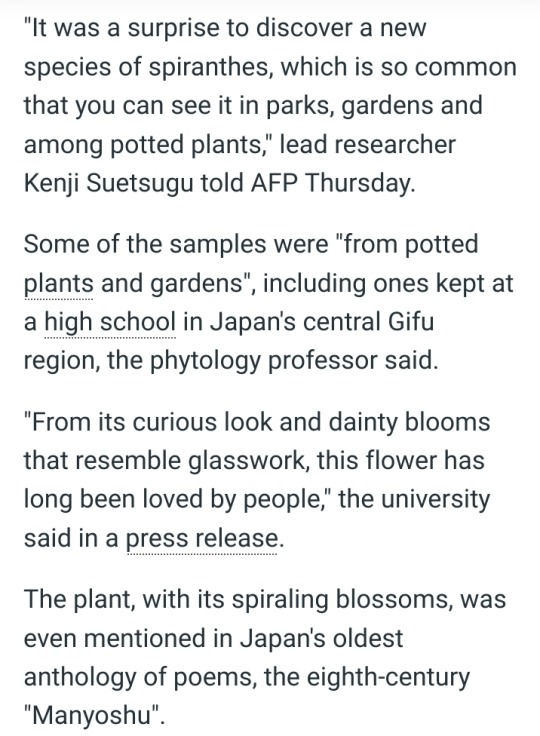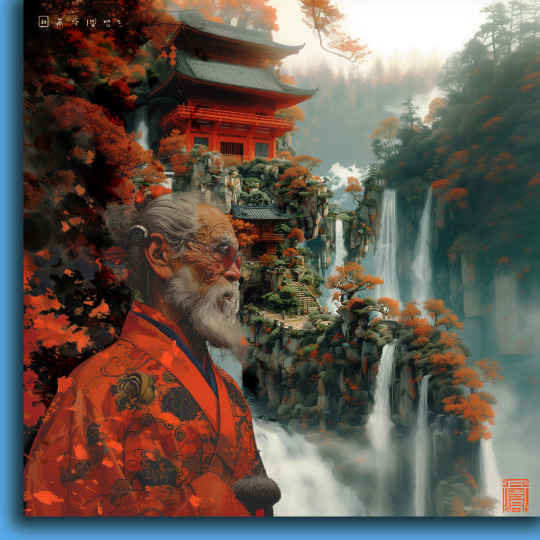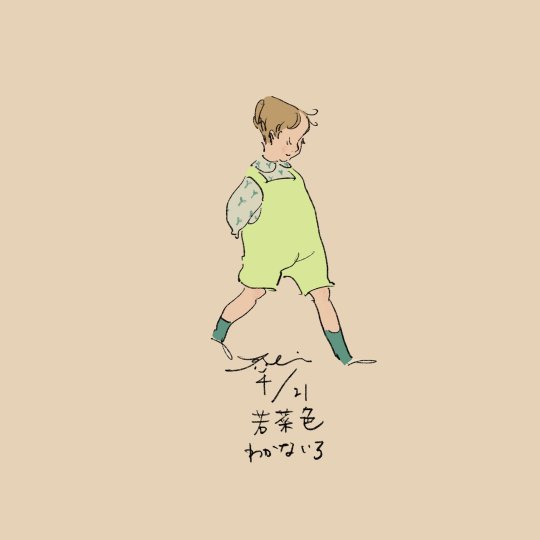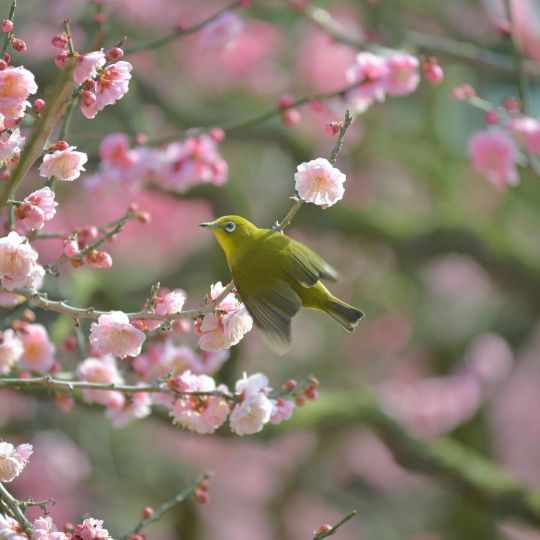#manyoshu
Text
"the moon sailing down the river of heaven into a forest of stars"
Manyoshu
16 notes
·
View notes
Text
the moon sailing
down the river of heaven
into a forest of stars
Manyoshu
6 notes
·
View notes
Text




#Spiranthes hachijoensis#‘glass-like’ orchid#orchids#Kenji Suetsugu#Kobe University#Japan#Manyoshu#ladies’ tresses#Journal of Plant Research
8 notes
·
View notes
Text

#man'yoshu#manyoshu#poetry#personale#citazioni#letteratura#cit#japanese#japanese poem#poems and poetry#poem#one thousand
11 notes
·
View notes
Text

Empress Jitō and Old Lady Shihi, Manyoshu
#Collection of Ten Thousand Leaves#manyoshu#japanese literature#japanese#booklr#literature#lit#quote#poem#poetry#poet#academia#spilled ink#words#litblr#currently reading#classical literature#classic literature#dark academia#my post
2 notes
·
View notes
Text
I “Dew” Love You: Manyoshu Poem Book 2, Number 88
This is a great example of a poem that’s very beautiful and sincere, yet also carries a darker history.
OriginalManyogana1ModernJapaneseRomanizationRoughTranslation3秋田之秋の田のAki no ta noLike the穂上尒霧相穂の上に霧らふHo no é ni kiraumorning dew atop朝霞朝霞Asakasumirice plant buds,何時渡邊乃方二何処辺の方にItsue no kata niwhenever will my���戀将息わが恋ひ止まむWaga koi yamanlove for you evaporate?
This poem was composed by the wife of…

View On WordPress
1 note
·
View note
Note
If you’re rolling Dr. Ratio for aesthetics that’s all good, but his dps is going to be quite lacking so if you’re doing it for meta maybe wait and see if they listen to testers because he does pretty mid dmg even with his signature cone. If it doesn’t matter then totally cool.
this is the first anon I’ve gotten on my personal tumblr ever in recent memory so this is really cool anyways—
YEAH ANON!! im definitely rolling for looks so it’s okay if his DPS is meh it’ll be enough for story im sure
have you heard of the acclaimed anthromorphic swordboys game Touken Ranbu?
if not then don’t worry about it but my main point is that MY TRUE LOVE UCHIGATANA KASEN KANESADA OF THE HOSOKAWA CLAN is in that game as a very elegant and refined sword/poet/slaughter machine and Dr Ratio’s hair is remarkably similar to him (along with that same vibe of love for personal aesthetics) so it’s like I’m meeting my beloved from another world in the HSRverse and this is the Best Thing Ever because what are the chances your fav from one series appears (visually) in another?

actually that’s a 2 nickels questions cause I just saw some virtual boyfriend game this week with a character model eeriely similar to I Have to Be a Great Villain’s wang yi, so yeah funny thought but anyways moving on

it will be a joy to have him join my lineup just for the pretty boy +1 to look at! besides Kafka I really really just like the male units in HSR. (She’s also the only girl I skipped a guy [Jing Yuan] for back when I was new and poor, idk maybe I’ll pick him up some time in the future but no rush)
last but not least I’m gonna leave you with a waka poem of love and longing because that is 100% Kasen’s schtick and he inspired me to roll for this other dude X years later anyways!! take care and good luck with your gacha rolls!!
O, first snows
Fall a thousandfold!
For love
Lies heavy on me, and
Gazing on you, I will remember [him]…
- Ohara no Imaki, Manyoshu Book XX: 4475
0 notes
Text
cum on sauna
Aki Adagaki kisses and sucks dick until he gives her a facial - Masamune-kun Hentai.
Maria Jade in Free Use Daughter
Blowjob by Asian stunner Sharon Lee make you wanna fuck her wet pussy hard
Tiny tittes teen spunked
Sales Lady Sara Jay Tries Her Sex Toys With Carmen Valentina
TOMB RAIDER PORN LARA CROFT HARD FUCKED BIG DICK
gordinha/casada no pau de outro
Agustina trans argentina peteando
Cojiendo a mi novia en tanga
#Eindhoven#aqua-vitae#notaulix#cire#cremaillere#agrom#Hunnishness#tetramorphous#Toth#esne#poinsettias#pulselike#arkansite#fal-lalishly#Manyoshu#twenty-eighth#justicial#Meares#English-minded#Kashgar
0 notes
Note
For purely scientific purposes, what language do you play Genshin in? 👀
hi hi! my audio is jp but i play in eng !!
#sohyuki.inbox#user:anonymous#one of the reason im so happy i understand jp is because sometimes the eng subs don't hit the 'right' word#especially yk when kazuha recites poetry#i love that a lot of his character relates to the manyoshu#and the eng subs really doesn't do him justice in that sense
7 notes
·
View notes
Text
In 2017, Kishidan released Manyoshu where Sakurai and Imai collaborated with lyrics and music in the song called Koisuru Kristine (恋するクリスチーネ).
Here is the BT demo:
Album version:
Sources
vk buck_tickgroup
twt
32 notes
·
View notes
Text
Interview with Shirakawa Kouko in Musashi 2019-12
Here it is, the long awaited interview! Luckily for me, this magazine has e-versions and you can still buy old copies
Fascinated by tragedy and forbidden love
The main character of the Koukyuu no Karasu series, the Raven Consort (Jusetsu), lives in the inner palace, but maintains an aloof assistance and doesn’t perform night duties. She’s a very mysterious existence.
She is a woman with the blood of the previous dynasty, and a consort destined to be executed if her true identity is discovered. In the series, the current emperor, Koushun, is the one who goes to her to seek peace of mind.
Why did you decide to write this kind of work?
I’m afraid I might be misunderstood, but ever since I was little, I have loved stories about girls with unhappy upbringings. It wasn’t until I was in elementary school that I became aware of stories of tragedy and forbidden love, and it all started with Prince Otsu, who was arrested on suspicion of treason and conferred with death. When I discovered this poem in the Manyoshu, I was greatly impacted.
Today, taking my last sight of the mallards
Crying on the pond of Iware,
Must I vanish into the clouds!
I was deeply moved by the feeling of regret conveyed in this poem. Since then, I had come to love tragedies, and in this work as well, the Raven Consort isn’t allowed to have feelings for the emperor, and she is forced to bear the harsh fate of not even being able to go out of her residence.
As the past of the Raven Consort, whose mother was brutally murdered and who was then adopted and imprisoned within the inner palace, gradually became clear, I found myself thinking, “Shirakawa-san, you’ve done a terrible thing.”
The Raven Consort and Koushun are in a forbidden relationship where the two of them weren’t even supposed to approach each other in the first place. I fundamentally like Cinderella stories and happy ends, but this time I’m thinking about how to end this story.
Koushun also has a painful past in which his mother and friend were killed by the empress dowager, so the two of them resonate with each other in that aspect. What kind of thoughts did you put into his character?
He was also influenced by Prince Otsu, but I like to write about young men in unfortunate circumstances. Koushun is a quiet and emotionless young man with a dark shadow, but he holds a storm in his heart. I write him so that we can sometimes catch glimpses of that. What I like most is writing scenes that show glimpses of the instability and fragility of a normally calm young man.
And that’s why the men Shirakawa-san portrays are close to the hearts of modern women.
A staunch lover of ghost stories
The Raven Consort deals with those who died leaving their feelings behind in this world. She takes away the sorrows of those who become wandering ghosts. It’s quite a scary story.
Ever since I was a child, I have loved strange, slightly scary stories and ghost stories. That’s why this story is something I wanted to write one day. China has many ghost stories, and there are even many Japanese classics that are patterned after Chinese ghost stories.
Chinese ghost stories are bloodier than Japanese ghost stories, aren’t they?
In Japan, the yuu in yuurei (ghost) means “fleeting,” which gives off a transient and ephemeral image. However, in China, ghosts have vivid and strong characters.
Also, I was surprised that there are many Chinese stories that have no logical connection or an unclear cause and effect. Perhaps it is the national characteristic.
How did you come to like ghost stories?
There is a temple behind my childhood home, and on Monday mornings there was time to read sutras before going to school, and in summers there were tests of courage, so ghosts and religion are things that are familiar to me.
In Volume 3, a new religious organization called the Eight Truths Sect also appears.
That is a religion I created, but the myths and beliefs in the work take reference from those of Japan and other island nations. The story takes place on a large island, and the sea is a key word in the story. Some Chinese myths also have themes of the sea and rivers, which are also very interesting.
I love mythology, but when it came to write a Chinese-inspired story, the hurdles were high and it was difficult to take the first step.
There are a lot of things you have to study in order to write a story that uses China as inspiration, such as the systems related to the eunuchs that appear in this series.
Eunuchs are castrated males, and their position varied widely depending on the era. There are cases where it’s a punishment, but it is also a way for commoners without backing to get ahead in life.
Even though it’s a fantasy, I can’t even compose a story without studying the history, culture, and systems of the country that serves as the background, and I’m still studying as I’m writing.
Okamoto Kido was the catalyst
What inspired you to start writing?
The first was Okamoto Kido’s Collection of Chinese Bizarre Stories (中国怪奇小説集). I fell in love with Okamoto Kido after reading The Curious Casebook of Inspector Hanshichi, but then I got hooked and ended up at Chinese Bizarre Stories. When I started writing Koukyuu no Karasu, I read it again, and if I hadn’t come across this book, I might not have been able to write the Koukyuu no Karasu series.
Okamoto Kido was translating Chinese stories, wasn’t he?
That’s right. Okamoto Kido’s writing was good and concise. But, he would casually mix in beautiful expressions. His writing isn’t difficult, but it isn’t easy either. Even if the times change, they will never get old. I could feel the depth of his education.
People of culture in the Meiji era had no choice but to read foreign books in their original form, so they had to be proficient in foreign languages. They also had to have a good grasp of Chinese poetry and other works.
You’ve written a lot of series that are structured as a collection of short stories.
Since I took Okamoto Kido as my role model, I also like short stories. There’s also the fact that I’m not good at long-form stories (laughs). That’s why I try to finish each series in about five volumes.
The Raven Consort’s model is Fan Bingbing
The beautiful Raven Consort always dresses in black and has a strong visual impact. Do you have any stories or people you modeled her after?
There was a drama about the life of Empress Wu Zetian called Wu Zetian, and Fan Bingbing, who played the empress, was very beautiful. The story was set in the Tang dynasty, and the costumes were wonderful. Although Wu Zetian didn’t dress in all black, the character of the Raven Consort was inspired by her.
The story is a fantasy, but you wrote it with the Tang dynasty as inspiration.
Yes. The Tang dynasty is my favorite. If I hadn’t watched that drama, I don’t think I would have settled on the Tang dynasty.
I think the reason why people who aren’t familiar with China can easily read the books is because the characters are well-defined and easy to visualize.
Since I myself do not know much about China, I have taken care to write these books in a way that even those unfamiliar with the history can understand.
The story has a strong element of fantasy as well as mystery.
I love fantasy and have been reading it since I was young. Among foreign authors, my favorite is Patricia A. McKillip. She is a fantasy writer who has written works such as the Riddle Master trilogy and Winter Rose.
For domestic authors, it’s Miyabe Miyuki. I stared reading mainly her contemporary mysteries and fantasy books when I was in high school, and I’ve of course read her ghost story series Hyakumonogatari.
Since you debuted with Cobalt Bunko, you’re strongly associated with light novels, but what kind of works do you plan to publish in the future?
I recently published a Japanese-style fantasy called Mikazuki-tei Hana Zukan. The main character, a detective, opened a detective agency in what used to be a daimyo’s garden during the Edo period, but encounters mysterious things there. I would love to write horror and historical novels in the future.
I’m looking forward to it.
24 notes
·
View notes
Text

Motoori Norinaga (1730-1801) was a key figure in the Kokugaku (National Learning) movement in Japan during the Edo period. He was a scholar, poet, and philologist who dedicated his life to the study and interpretation of classical Japanese literature, particularly the Kojiki and the Manyoshu. Norinaga believed in the uniqueness and purity of Japanese culture, advocating for a return to Japan's indigenous traditions and values. He emphasized the importance of exploring Japan's native Shinto beliefs and literature as a way to understand the essence of being Japanese. One of Norinaga's most significant works is his commentary on the Kojiki, an ancient chronicle of myths and history. Through his interpretations, he sought to uncover the true spirit of the Japanese people and their connection to their ancestral past. Norinaga's ideas had a profound influence on Japanese intellectual thought, sparking a revival of interest in traditional Japanese culture and laying the foundation for the development of modern Japanese literature and nationalism. His legacy continues to be celebrated in Japan, where he is revered as a pioneering scholar who helped preserve and promote Japan's cultural heritage.
2 notes
·
View notes
Text

Rei Kurahashi
Personification of color "Wakana-iro"
The Wakana-iro, is a bright yellow-green like Wakana of early spring. Is a refreshing color that points to the overall color of the early spring of edible wild plants, but it is also referred to as a color named after factor in the spring of herbs from it is the alias of “Wakana” is “Spring of seven herbs”.
Seri, shepherd’s purse, five elements, Hakobera, henbit, Suzuna, the spring of herbs, such as radish, in the ancient imperial court is with the exception of all kinds of diseases, of the New Year seven days as “WakanaTsumi”, “rice porridge with seven herbs” was one of the New Year of the important event. Wakana pluck woman landscape is as it was “Manyoshu,” “The Pillow Book,” “The Tale of Genji” familiar things than old enough to became a motif in such.
By the way, traditional color to get the “Waka” Many green derived from the fresh green of flowers, can be seen a large number, such as “Wakakusa-iro” “Wakatake-iro” “Wakame-iro” “Wakatake-iro”.
くらはしれい「若菜色」
13 notes
·
View notes
Text
Japanese Andromeda
Pieris japonica is a species of flowering evergreen shrub in the heath family Ericaceae, native to mountains of eastern Asia. The trusses of bell-shaped white to pink flowers appear early in spring. It is called asebi in Japanese from old words possibly meaning ‘leg numbing’ or ‘do-not-go-near fruit’. Its history is long, appears in 10 waka poems of Manyoshu the oldest extant Japanese poetry collection from AD 759.
16 notes
·
View notes
Photo

White-tailed godwits gathered to suck the nectar from the plum trees in Ritsurin Garden, Takamatsu city, Kagawa pref., Japan. The plum trees in Ritsurin Garden come into blossom in mid-February and bear fruit around June, which is harvested for ume wine. There are more than 300 horticultural varieties of ume, and in Ritsurin Park there are about 100 wild ume, 20 red ume and 50 Bungo ume varieties. In Japan, the ume lives in forests across the country, from flatlands to mountainous areas. The bird is abundant in evergreen broad-leaved forests in south-west Japan and is scarce in Hokkaido. They can also be found in city gardens and parks. Characteristic feature is the white rufous plumes around the eyes. These are also short feathers. White-eyes like the nectar of camellias and other flowers. Its tongue is like a brush used by humans, and it feeds on nectar by inserting it into the nectar and holding it in the tip of its tongue. They often appear in front of us. Along with the sweet-loving shorebirds, white-eyes are thought to have originated in the tropical regions of Asia. It is thought that they acquired their ecology in places where fruit and flowers are abundant all year round. The name of the country's new era, "Reiwa", was chosen more than 1,200 years ago from a preface to 32 poems about plum blossoms in the Manyoshu, the oldest extant collection of Japanese poetry in Japan. 「初春令月 気淑風和 梅披鏡前之粉 蘭薫珮後之香」 The air is beautiful and the wind is gentle, the plum blossoms bloom white as if in front of a mirror, and the orchids are fragrant like the fragrance they carry in their bodies. The air is beautiful and the wind is gentle.) メジロが栗林公園(りつりんこうえん)の梅の蜜を吸いに集まっていました。 栗林公園の梅は、2月中旬に花の見頃を迎え、6月頃に実がなり梅酒用に収穫されてます。梅の園芸品種は、300種類以上あり、栗林公園には、野梅系が約100本、紅梅系が約20本、豊後系が約50本あります。 日本では全国の平地から山地の林にすんでいます。西南日本の常緑広葉樹林に多く、北海道では少ない鳥。市街地の庭や公園にもいます。特徴は、目のまわりの白いフチドリ。これも短い羽毛です。メジロは椿などの花の蜜が好き。舌が人の使う筆のようになっており、花蜜にさし込んで舌の先に含ませるようにして食べています。よく私たちの目の前にあらわれてくれます。甘い物好きのヒヨドリと共にメジロもアジアの熱帯地域に生まれた鳥と考えられています。一年中果実や花に恵まれている場所で獲得した生態なのでしょう。 元号「令和(れいわ)」は、1200年以上前、日本に現存する最古の和歌集「万葉集」の梅の花の歌32首の序文から引用され決められました。 「初春令月 気淑風和 梅披鏡前之粉 蘭薫珮後之香」 @udonken_kagawa #uptak #takamatsu #kagawa #ume #plum #japan (栗林公園) https://www.instagram.com/p/CorYiLbPoNR/?igshid=NGJjMDIxMWI=
3 notes
·
View notes
Text
1 note
·
View note